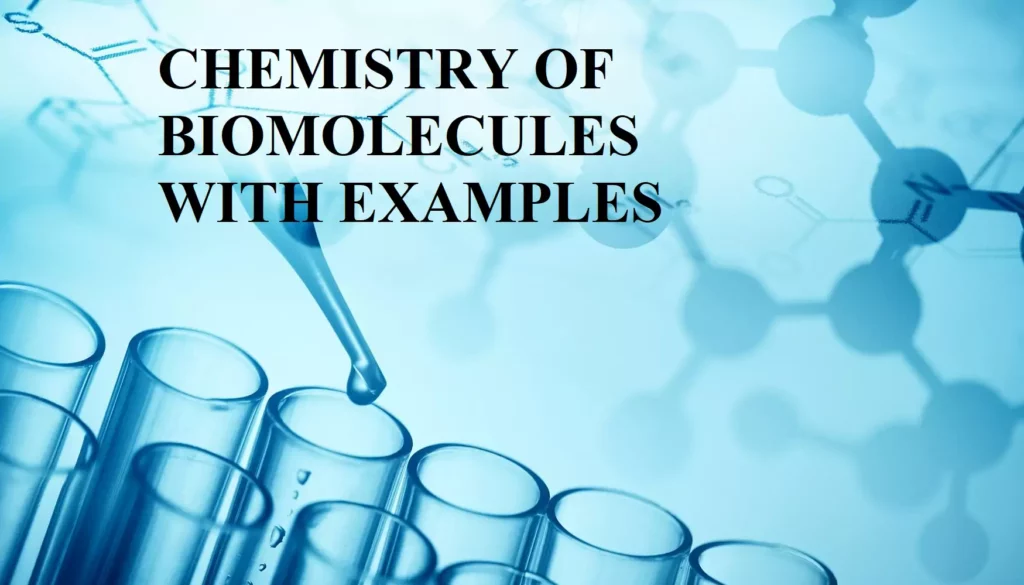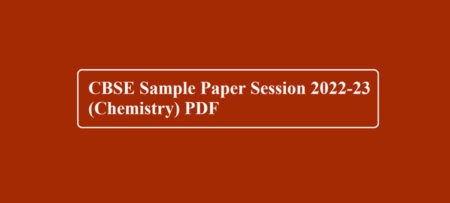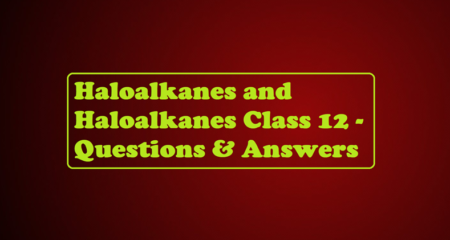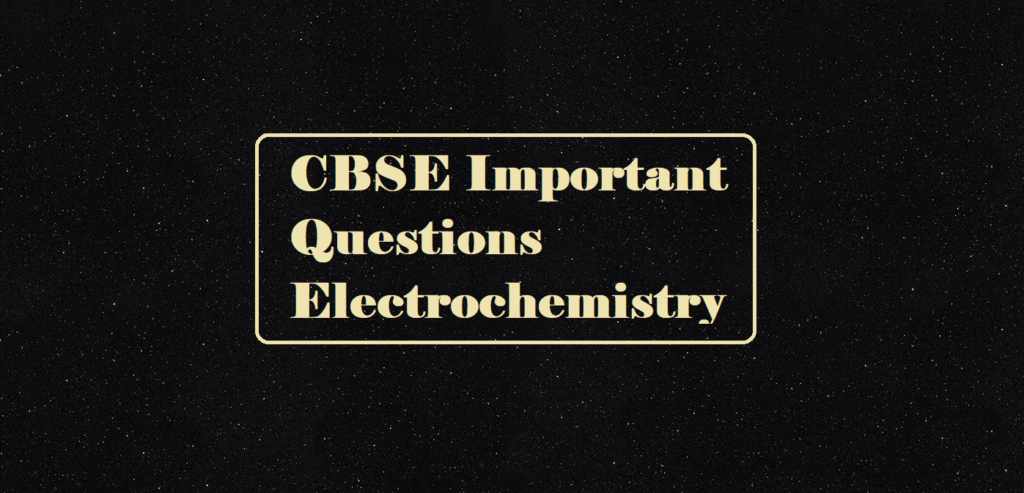CHEMISTRY OF BIOMOLECULES WITH EXAMPLES
The molecules present in the living system which are essential for the growth and maintenance of our body are called ‘Biomolecules’.
Eg. Carbohydrates, Proteins, Nucleic acids, Lipids, Vitamins, etc.
CARBOHYDRATES / SACCHARIDES
According to Old concept, these are the hydrates of carbon and most of them have a general formula Cx(H2O)y.
According to Modern concept, these are poly-hydroxy aldehydes or ketones or substance which produces such units on hydrolysis. Some of the carbohydrates are crystalline, water-soluble, and sweet in taste. They are called Sugars. Carbohydrates that are not crystalline, water-insoluble, and have no sweet taste are called Non-Sugars. Carbohydrates are also called ‘Saccharides’. The most common sugar, used in our homes is named as sucrose whereas the sugar present in milk is known as Lactose.
Classification of carbohydrates
Based on their Behaviour on Hydrolysis:
(i) Monosaccharide’s: These are carbohydrates that cannot be hydrolyzed into simpler units of poly-hydroxyaldehydes or ketones. E.g.: Glucose, fructose, galactose, ribose, etc.
If a monosaccharide contains an aldehyde group, it is known as an Aldose and if it contains a keto – group, it is known as a Ketose.
(ii) Oligosaccharides: These are carbohydrates that give 2-10 monosaccharide units on hydrolysis. They are further classified as disaccharides, trisaccharides, tetrasaccharides, etc., depending upon the number of monosaccharides, they provide on hydrolysis. E.g.: Sucrose, maltose, lactose etc.
Sucrose on hydrolysis gives one molecule each of glucose and fructose, maltose gives two molecules of glucose while lactose gives one molecule each of glucose and galactose.
(iii) Polysaccharides: These are carbohydrates that give a large number of monosaccharide units on hydrolysis. E.g.: Starch, Cellulose, Glycogen, Gums, etc.
Based on their reducing character:
All monosaccharides whether aldose or ketose are reducing sugars.
Based on this, carbohydrates are of two types-
(i) Reducing sugar – Carbohydrates that contain free aldehydic or ketonic groups. e.g.: All monosaccharides, disaccharides like maltose and lactose.
(ii) Non-reducing sugar- Carbohydrates that do not contain a free aldehydic or ketonic group. e.g.: Sucrose, all polysaccharides.
Based on their physical properties:
(i) Sugars: Carbohydrates that are sweet in taste, crystalline, and water-soluble.
(ii) Non-sugars: Carbohydrates that have no sweet taste, not crystalline and water-insoluble. eg: all polysaccharides.
CHEMISTRY OF BIOMOLECULES WITH EXAMPLES
GLUCOSE / DEXTROSE
Glucose is an aldohexose. Its molecular formula is C6H12O6.
Preparations:
(i) From sucrose (Cane sugar): Sucrose boiled with dil. HCl or H2SO4 in alcoholic solution, glucose, and fructose are obtained in equal amounts.
![]()
(ii) From starch: Commercially glucose is obtained by hydrolysis of starch by boiling it with dil. H2SO4 at 393 K under pressure.
![]()
Reactions of Glucose:
(i) Oxidation Reactions:

(ii) Reduction Reactions:
(a) Reaction with HI:

(b) Reaction with sodium amalgam:

(c) Reaction with hydroxylamine:

(iii) Reaction with HCN:

(iv) Acetylation reaction of Glucose:

(v) Reaction with Phenyl hydrazine:

1. Based on the above information, Fischer (1891) proposed an open-chain structure for glucose as follows:
 2. But this open chain structure cannot explain the following observations:
2. But this open chain structure cannot explain the following observations:
(i) Glucose does not react with 2,4-Dinitrophenyl hydrazine, Schiff’s reagent, and with NaHSO3.
(ii) The pentaacetate of glucose does not react with hydroxylamine indicating the absence of the free —CHO group.
(iii) The existence of two different crystalline forms of glucose (α and β form).
In order to explain the above, it was proposed that one of the –OH groups may add to the –CHO group and form a cyclic hemiacetal structure. The –OH at C5 is involved in a ring formation. (1,5–oxide ring).

Thus the two cyclic forms exist in equilibrium with the open-chain structure. The two cyclic hemiacetal forms of glucose differ only in the configuration at first carbon (anomeric carbon). So they are called anomers. They are stereoisomers that differ only in the configuration at the first carbon.
The six-membered cyclic structure of glucose is called the Pyranose structure. The anomeric forms of glucose can be represented as follows:

CHEMISTRY OF BIOMOLECULES WITH EXAMPLES
FRUCTOSE (KETOHEXOSE)
Fructose also has the molecular formula C6H12O6 and on the basis of its reactions, it was found to contain a ketonic functional group at carbon number 2 and six carbons in the straight chain as in the case of glucose.

DISACCHARIDES
The two monosaccharides are joined together by an oxide linkage formed by the loss of a water molecule. Such a linkage between two monosaccharide units through oxygen atoms is called Glycosidic Linkage.
| S.No | Sugar | Reducing Character | Monosaccharides | Glycosidic Linkage |
| 1 | Sucrose | Non-Reducing | α-D glucose + β-D-fructose | C1 of α-glucose and C2 of β-fructose (C1 –C2) |
| 2 | Maltose | Reducing | α-D glucose + α-D-glucose | C1 of one α-glucose and C4 of another α- glucose (C1 – C4) |
| 3 | Lactose | Reducing | β-D-glucose + β-D- galactose | C1 of galactose and C4 of glucose |
SUCROSE

MALTOSE
 Hydrolysis of cane sugar is also called the inversion of sugar. Cane sugar is sucrose, which on hydrolysis gives an equimolar mixture of D(+)glucose and D(-)fructose.
Hydrolysis of cane sugar is also called the inversion of sugar. Cane sugar is sucrose, which on hydrolysis gives an equimolar mixture of D(+)glucose and D(-)fructose.
 Sucrose is dextrorotatory but after hydrolysis gives dextrorotatory glucose and laevorotatory fructose. Since the laevo rotation of fructose (-92.40) is more than the dextrorotation of glucose (+52.50), the mixture is laevorotatory. So the process is called inversion of cane sugar and the product formed is called invert sugar.
Sucrose is dextrorotatory but after hydrolysis gives dextrorotatory glucose and laevorotatory fructose. Since the laevo rotation of fructose (-92.40) is more than the dextrorotation of glucose (+52.50), the mixture is laevorotatory. So the process is called inversion of cane sugar and the product formed is called invert sugar.
CHEMISTRY OF BIOMOLECULES WITH EXAMPLES
POLYSACCHARIDES
Polysaccharides contain a large number of monosaccharide units joined together by glycosidic linkages. They mainly act as food storage or structural materials.
| No. | Sugar | Reducing Character | Monosaccharides | Glycosidic linkage b/w |
| 1 | Starch | Non-Reducing | α-D-glucose | It contains two components –1. Amylose is a linear polymer of α-D-glucose (C1-C4)2. Amylopectin is a branched-chain polymer of α-D-glucose (C1-C4& C1-C6) |
| 2 | Cellulose | Non-Reducing | β-D-glucose | C1 of one glucose and C4 of another glucose |
| 3 | Glycogen | Non-Reducing | α-D-glucose | Similar to amylopectin |
Amylose
Amylopectin

Cellulose
Cellulose occurs exclusively in plants and is the most abundant organic substance in the plant kingdom. It is a predominant constituent of the cell wall of plant cells. Cellulose is a straight-chain polysaccharide composed only of α-D- glucose units which are joined by the glycosidic linkage between C1 of one glucose unit and C4 of the next glucose unit.
Glycogen
The carbohydrates are stored in the animal body as glycogen. It is also known as animal starch because its structure is similar to amylopectin and is rather more highly branched. It is present in the liver, muscles, and brain. When the body needs glucose, enzymes break the glycogen down to glucose. Glycogen is also found in yeast and fungi.
CHEMISTRY OF BIOMOLECULES WITH EXAMPLES







